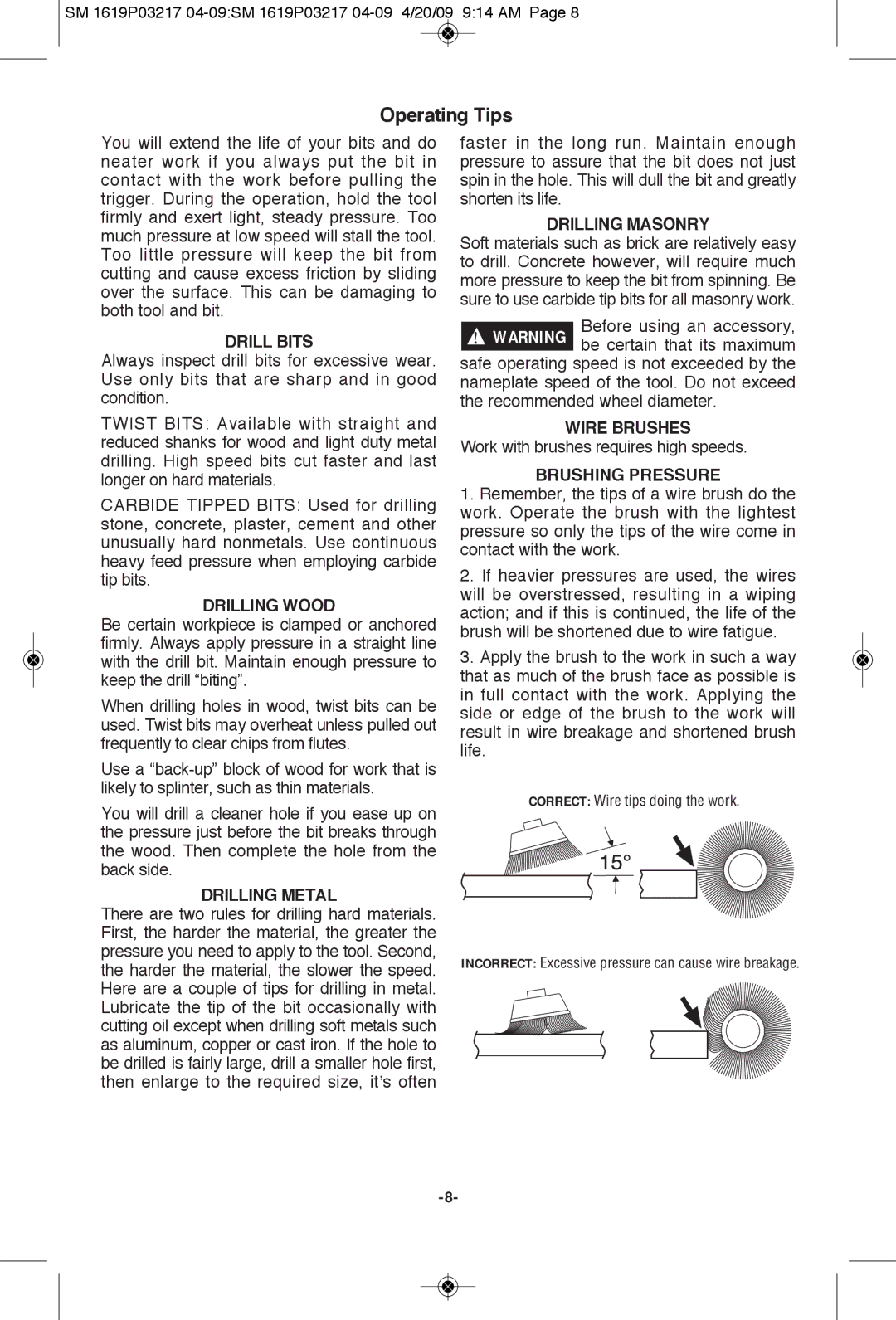6132, 6238 specifications
The Skil 6238 and Skil 6132 are advanced power tools designed for both professionals and DIY enthusiasts. Known for their reliability and superior performance, these tools are equipped with a range of features that enhance usability and efficiency in various tasks.The Skil 6238 is a powerful jigsaw that stands out for its versatility and precision. It features a variable speed control that allows users to adjust the speed based on the material being cut, enabling cleaner cuts and greater control. The jigsaw's orbital action feature offers multiple settings, allowing users to choose the best cutting motion for different applications. Additionally, the tool is designed with an easy blade change system, ensuring minimal downtime during projects.
Another highlight of the Skil 6238 is its ergonomic design, which promotes comfort during extended use. The non-slip grip and well-balanced structure reduce fatigue, making it an ideal choice for intricate cuts in wood, metal, and plastic. The integrated dust blower keeps the cutting line clear, providing better visibility and enhancing the accuracy of cuts.
On the other hand, the Skil 6132 is a robust rotary hammer that proves invaluable for heavy-duty tasks. This tool is engineered for drilling and chiseling in a variety of materials, including concrete and masonry. It boasts a high-performance motor that generates ample power for demanding tasks, making it suitable for both construction and renovation projects.
One of the key features of the Skil 6132 is its three-mode operation: drill, hammer, and chisel. This versatility allows users to switch between different applications seamlessly. The tool also incorporates a durable and efficient SDS-plus chuck, which facilitates quick bit changes and firmly holds bits in place during use.
Both tools benefit from Skil’s commitment to user safety and convenience. They are equipped with features like overload protection and vibration control, which enhance user safety and comfort during operation. Overall, the Skil 6238 and Skil 6132 are prime choices for anyone looking to invest in reliable and efficient power tools that deliver professional results.

